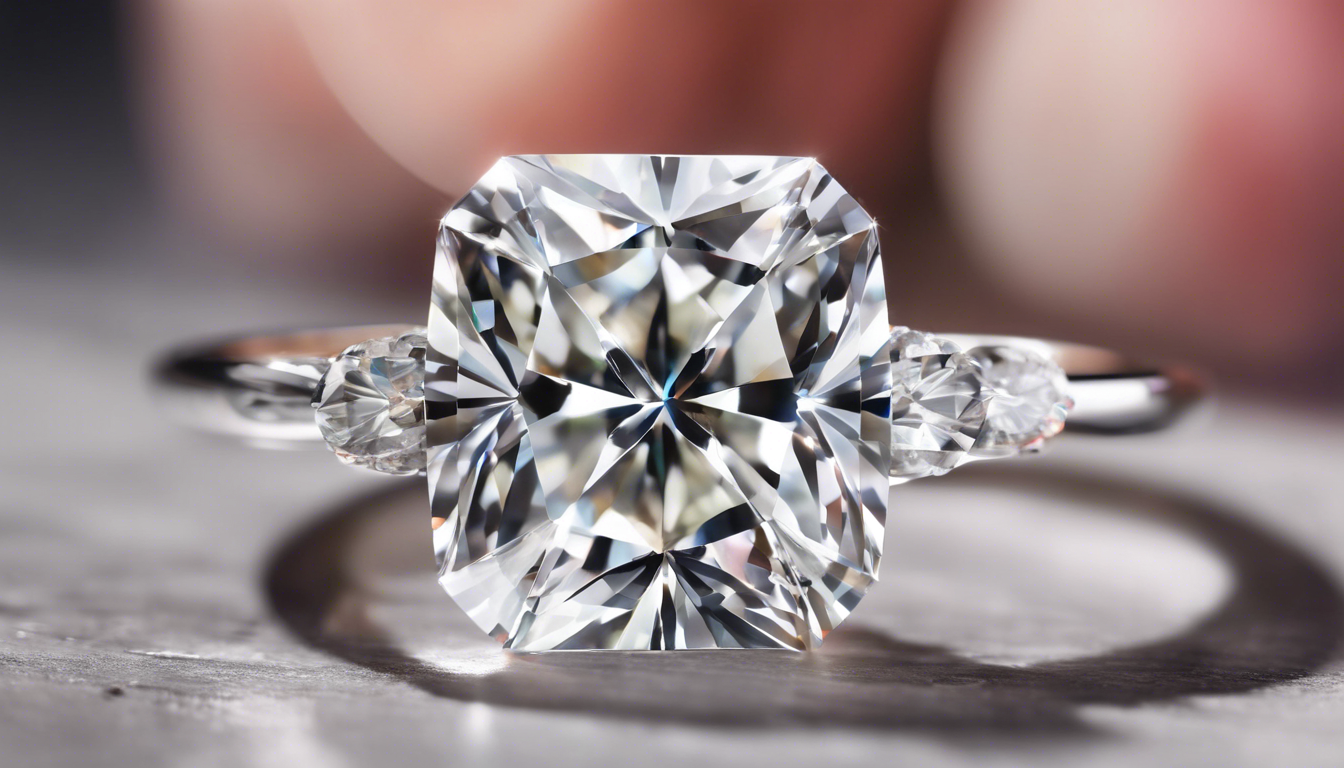Is Moissanite a Real Diamond? Discover the Truth Behind this Stunning Gemstone

When it comes to choosing the perfect gemstone for engagement rings, many people go straight for the classic diamond.
However, if you’ve heard whispers about Moissanite, you might be wondering, 'Is Moissanite a real diamond?' Let’s explore this fascinating gemstone and uncover the truth behind its beauty, origins, and why it might just be the perfect choice for your special piece of jewelry.
In this article, we’ll delve into what Moissanite really is, compare it to diamonds, discuss its history, and highlight the benefits of choosing this stunning alternative.
Plus, we'll tackle some common myths to help you make an informed decision.
Let’s dive in!

Key Takeaways
- Moissanite is a distinct gemstone, not a real diamond, with unique characteristics.
- The primary differences between moissanite and diamonds include their hardness, brilliance, and price.
- Moissanite was discovered from a meteorite, making its origin fascinating yet different from that of diamonds.
- Many benefits make moissanite an attractive choice, including ethical sourcing and lower cost compared to diamonds.
- Common myths about moissanite being 'fake' are debunked, highlighting its beauty and legitimacy as a gemstone.
Understanding Moissanite: What is it?
When it comes to choosing a stunning gemstone for your engagement ring or other jewelry, you might find yourself wondering, 'Is moissanite a real diamond?' The simple answer is no; moissanite is not a diamond, but it does offer a dazzling alternative.
Discovered over a century ago by French chemist Henri Moissan, this unique gemstone is composed of silicon carbide and was initially found in a meteorite!
So, while it isn’t a diamond formed deep within the Earth’s crust, moissanite exhibits incredible brilliance and fire, often surpassing that of natural diamonds.
Its optical properties make it an attractive and affordable option for those looking for something special without the hefty price tag that often comes with real diamonds.
Comparing Moissanite and Diamonds: Key Differences
When it comes to choosing the perfect gemstone, many people often find themselves asking, 'is moissanite a real diamond?' This question highlights the growing popularity of moissanite, a stunning gemstone that's often compared to diamonds.
While both stones have their charm, there are key differences to consider.
Firstly, moissanite is a lab-created stone, while diamonds are formed over millions of years deep within the Earth’s mantle, making diamonds a natural gemstone.
In terms of appearance, moissanite has a slightly different sparkle due to its high refractive index, making it dazzle even more intensely than diamonds.
Additionally, moissanite is generally more affordable, offering a budget-friendly alternative to those who want the look of diamonds without the hefty price tag.
So, while moissanite isn’t technically a real diamond, it stands out in its own right and can be an excellent choice depending on personal preferences.
'The beauty of a gem is not in its perfection, but in its transparency.' - Suzy Kassem

The Origins of Moissanite: A Brief History
When it comes to the stunning world of gemstones, many people find themselves asking, 'Is moissanite a real diamond?' To answer that, let's dive into the fascinating history of moissanite itself.
Discovered in 1893 by the French chemist Henri Moissan while he was examining a meteorite in Arizona, moissanite initially sparked interest because of its celestial origins.
Moissan mistakenly thought he had found diamonds due to its sparkle and brilliance, but later research confirmed that this unique stone is actually a compound of silicon carbide.
It wasn't until the late 20th century that synthetic moissanite began to be produced, created in laboratories to offer a diamond-like appearance at a fraction of the cost.
So, while moissanite is not a diamond in the traditional sense, it certainly holds its own as a stunning gem that rivals diamonds in beauty and durability.
Its rich history and unique characteristics make it a popular choice among those seeking an alternative to diamonds.
Moissanite's Benefits: Why Choose It Over Diamonds?
When considering gemstones, you might wonder, 'Is moissanite a real diamond?' The answer is both yes and no.
While moissanite possesses stunning brilliance and fire comparable to diamonds, it is actually a separate substance made from silicon carbide.
One of the main benefits of choosing moissanite over diamonds is its affordability; high-quality moissanite stones can cost a fraction of what diamonds do.
Additionally, moissanite is more environmentally friendly and ethically sourced, which is increasingly important for conscious consumers.
Its durability is impressive too, with a hardness rating of
9.25 on the Mohs scale, making it suitable for everyday wear.
So, if you're looking for a dazzling and ethical alternative to diamonds, moissanite is worth considering!

Debunking Myths: Is Moissanite a Real Diamond?
When diving into the world of gemstones, you might have stumbled upon the sparkling allure of moissanite and wondered, 'is moissanite a real diamond?' This question is quite common, but let’s clear the air.
While moissanite and diamonds share some similarities in appearance and brilliance, they are indeed different substances.
Moissanite is a naturally occurring mineral, silicon carbide, originally discovered in a meteorite, which gives it a distinct origin story compared to diamonds, which are formed deep within the Earth under intense pressure and temperature.
Furthermore, moissanite has its own unique set of properties, such as a higher dispersion rate, meaning it can exhibit more fire than diamonds.
So, while moissanite isn’t a diamond in the traditional sense, it certainly holds its own as a stunning and ethical alternative that many people have come to love.
Frequently Asked Questions
Is Moissanite a real diamond?
No, Moissanite is not a real diamond.
While it is a gemstone that resembles a diamond and is often marketed as a diamond alternative, it has a different chemical composition and structure.
What are the main differences between Moissanite and diamonds?
The key differences include their hardness, brilliance, and thermal conductivity.
Moissanite has a higher refractive index, which makes it sparkle more than diamonds, but diamonds are harder and more durable.
Where does Moissanite come from?
Moissanite was first discovered in a meteorite by the French chemist Henri Moissan in 1893.
It is now mostly created synthetically in laboratories, making it more accessible and ethical compared to naturally mined diamonds.
What are the benefits of choosing Moissanite over diamonds?
Some benefits of choosing Moissanite include its affordability, ethical sourcing, and superior sparkle.
Moissanite can also be more environmentally friendly since it's often created in labs.
Are there any myths about Moissanite I should know?
Yes, one common myth is that Moissanite is an inferior substitute for diamonds.
In reality, Moissanite has unique qualities that make it a beautiful and valuable gemstone in its own right.
